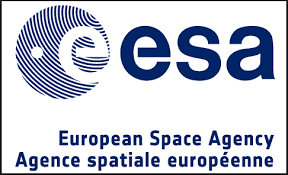- Polytech
- News
-
Partager cette page
Esa Prodex Heat Transfer
Condensation on Fins
Titre
The enhanced heat transfer tubes for vapour condensation is widely used, e.g. in refrigeration, air conditioning, petroleum and food industry etc. A generally used intensification method is the finning of the tube surface. The enhancement is provided not only by increasing the contact area between the vapour and the colder surface but also by the action of surface tension forces, which help to move a condensate from the fin additionally to other forces (gravitational, shear stress, …).
ULB Coopération
Any curvature variation along the interface induces a pressure inhomogeneity within the liquid which leads to fluid redistribution. This pressure variation is known as the surface-tension pressure gradient (STPG). The fin shape influences the condensate film flowing along the fin surface. This leads to the arising of STPG, which effects on the film flow. It is presented in the condensate flowing along any fin, because each fin shape has corners and/or rounding. This fact reveals two main problems in the theoretical description of vapour condensation on the finned surface. First of all, the fin shape becomes one of the parameters in the modelling that complicates the simulation, considering the big variety of possible profiles. Secondly, there are some difficulties with the validation of existing models.
Esa
The local data about the condensate behavior on the fin and the liquid flow between fins are very important for improvement of existing models and validation of the approaches made. To perform such kind of investigations the gravitational force has to be negligibly small in comparison with the capillary forces. To satisfy these conditions on earth, the height of the fin has normally to be smaller than 2 mm, depending on the liquid properties. This makes local measurements to be very difficult. The estimation shows that under microgravity conditions the lateral length of the fin may be increased by a factor 30-60. That allows using of modern measurement techniques without any limitations.


Communications publiées lors de congrès ou colloques nationaux et internationaux
2017
Design and synthesis of novel ruthenium(ii) and osmium(ii) complexes with potential antitumor activity
Marloye, M., Berger, G., Ingels, A., Meyer, F., Gelbcke, M., Mathieu, V., & Dufrasne, F. (2017). Design and synthesis of novel ruthenium(ii) and osmium(ii) complexes with potential antitumor activity. In R. Frederick, L. Pochet, P. de Tullio, & F. Dufrasne (Eds.), 31ièmes Journées Franco-Belges de Pharmacochimie: Meeting Report: Vol. 10 (4 ed., pp. 9-10) Bâle: MDPI.
Dual Anti-Inflammatory and Anti-Bacterial Effects of Phenylhydrazide and Phenylhydrazone Derivatives
Soubhye, J., Meyer, F., Van Antwerpen, P., Gelbcke, M., & Dufrasne, F. (2017). Dual Anti-Inflammatory and Anti-Bacterial Effects of Phenylhydrazide and Phenylhydrazone Derivatives. Dual Anti-Inflammatory and Anti-Bacterial Effects of Phenylhydrazide and Phenylhydrazone Derivatives. Vol. 3 Electron. Conf. Med. Chem.(3ème: 5-30/11/2017: Basel).
Divers
2012
Analyse des médicaments organiques
Dufrasne, F. (2012). Analyse des médicaments organiques: Partie générale: stéréoisomérie, propriétés physico-chimiques et réactivité des principales fonctions et groupements d'atomes. ULB.https://dipot.ulb.ac.be/dspace/bitstream/2013/129470/1/Analyse fonctionelle syllabus 2012-2013 ULB BA2 COUL.pdf
Analyse des médicaments organiques
Dufrasne, F. (2012). Analyse des médicaments organiques: Partie générale: stéréoisomérie, propriétés physico-chimiques et réactivité des principales fonctions et groupements d'atomes UMONS.https://dipot.ulb.ac.be/dspace/bitstream/2013/129471/1/Analyse fonctionelle syllabus 2012-2013 UMons.pdf
2001
Chimie pharmaceutique et analyse des médicaments organiques
Neve, J., Dufrasne, F., & Gelbcke, M. (2001). Chimie pharmaceutique et analyse des médicaments organiques.https://dipot.ulb.ac.be/dspace/bitstream/2013/23777/1/Syllabus TP Final.pdf
